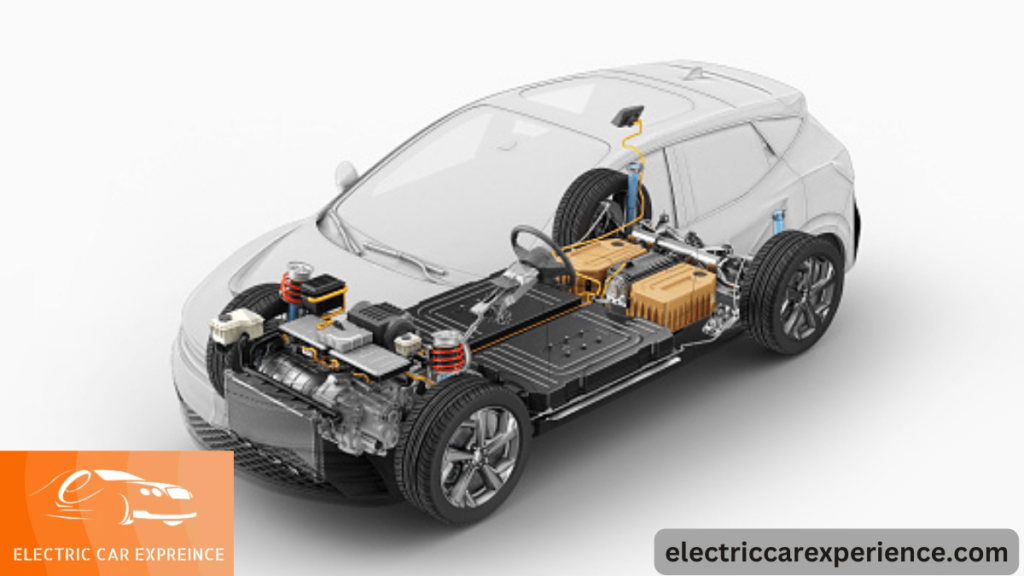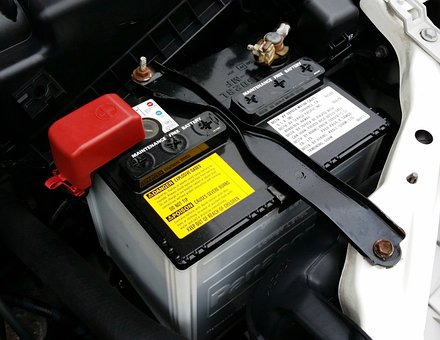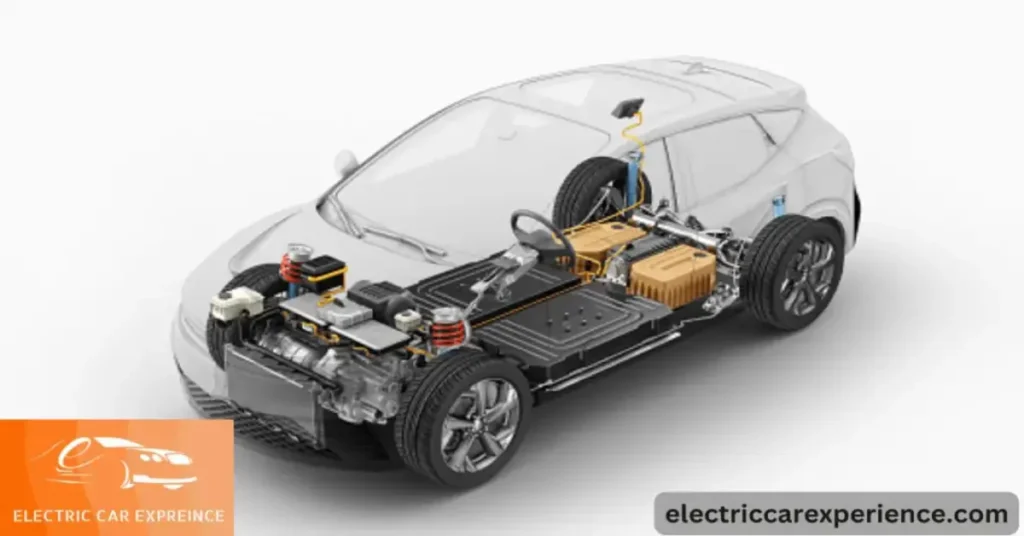
New and potential owners of electric vehicles have many inquiries. You’re not alone if you recently purchased an EV and are unsure about what would happen if the battery fails. So what do you think? Are electric cars worthless once the main battery dies?
It’s a reasonable worry given that nobody wants to be left stranded on the side of the road, particularly if someone with a spare gas can’t help. The quick response is, well, nothing. Your EV will stop running, just like a car running out of gas, and you’ll require roadside assistance or a tow.
But there are other responses to that query, and it’s a little trickier than an ordinary ICE car. Here are a few facts about your EV battery that you should know and what to do if it dies.
What Happens When an Electric Car Hits 0% Battery?
The primary concerns, and probably what the majority of you worry about, are range anxiety and what to do when your battery runs out, which is comparable to running out of gas.
When an electric car’s primary high-voltage battery runs empty, does it just abruptly stop and switch off like a smartphone? Without a doubt, no.
Running out of battery is the equivalent of running out of gas in an electric vehicle. Your car’s dashboard will have a warning that the driver can see well in advance. Instead of a low fuel indicator, a low battery alert will be visible.
The car will give you plenty of notice before the battery is about to run out, allowing drivers to pick a safe charging spot. In some Tesla models, the center console screen will even begin blinking to draw your attention and allow you some extra time to find a charger. Numerous automobiles even have navigation systems that can alert you when a charging station is nearby.
Depending on the manufacturer, things change if you happen to reach 0% and your electric vehicle’s battery is completely depleted. Most of the time, you’ll still have sufficient battery life to travel a few more kilometers and, ideally, arrive at a charging station. Some vehicles may have speed restrictions, while others may reduce power to prolong battery life. In both cases, your time will be limited.
The car will soon lose its ability to accelerate, the throttle will stop operating, and it will come to a soft, secure stop. Because you still have power steering and other safety features, you should try to quickly pull over to the side of the road and away from danger. similar to what you would do if your gas tank were empty.
Remember that the interior power, lighting, gauges, and digital display will all continue to operate because they are all powered by the same 12-volt battery. You just won’t have enough power to compete with the electric motors, so you won’t be able to move very far.
Millions of electric cars are coming. What happens to all the dead batteries?
Those useless batteries are pretty expensive. It’s really far simpler to salvage them from dead batteries than it is to mine and refine new ones because they contain elements (such as lithium, cobalt, and others) that are challenging and expensive to mine.
It resembles metal. Because recycling aluminum is so much cheaper and simpler, aluminum cans tend to disappear from garbage bins rather rapidly.

What will happen to all of the electric car batteries that are dead?
For a long time, the batteries won’t run out of power. The batteries consist of several distinct cells (smaller than flashlight cells). Disassembling EV batteries and replacing the weakest cells is a multibillion-dollar industry.
The reconditioned batteries can subsequently be utilized in EVs again or for other uses (like electrical grid storage). In order to recuperate the metals utilized, the weak cells removed during the refurbishing will eventually be recycled (just as practically all of the lead-acid car batteries are recycled).
Because improved battery designs and chemistry use less metal for a given amount of storage capacity, the metals salvaged from an old battery can be used to produce numerous new batteries.
Is it possible to dispose of electric car batteries?
These are recycled at a specific spot. If you run a shop that fixes electric vehicles, you are aware of their location. You know where to dispose of oil, just like a regular shop.
Battery packs are not disposed of by normal people; it’s just not something they do.
However, battery-receiving facilities do exist.
Is it conceivable for an electric car’s battery to fail?
Two of the batteries have a lifespan. Within a few years, one of them will most likely pass away. Every electric vehicle has a sizable traction battery that gives it the power to move. This item is large and costly. Purchasing a new Tesla S battery costs around $15,000 USD and weighs 600 kg. Tesla does offer a lengthy warranty on this battery, though.
About nine years have passed since the first Tesla S vehicles were delivered, and the majority of them likely still have their original batteries.
Each electric vehicle also includes its own battery, a standard 12V lead-acid battery. In essence, every other car has the same thing under its hood. They are 12-volt batteries.
What happens to the batteries in electric cars when their useful life is over? Are they disposed of in landfills to cause new types of pollution?
No. Batteries are removed from cars and sold for use in stationary power banks once they have lost enough capacity to be no longer useful in cars. Companies that specialize in the distribution of used EV batteries include.
All of the components are recycled into new batteries whenever they are too worn out for even that.
What occurs to an electric vehicle when its battery runs out?
Depending on what you’re discussing. when the battery runs out or dies permanently, making it impossible to move the car.
A new battery pack can be inserted if the battery dies permanently ( or a used one from a junked car using the same type of battery). quite comparable to swapping out the engine in an ice car.

The automobile can be transported to a charging station and the battery replenished if you’re only talking about running out of electricity.
You must monitor how much energy you still have, whether! while it’s simpler to use hydrocarbon fuel
What happens to dead batteries in electric cars?
This query assumes that the battery will deplete before the electric car it powers has reached the end of its useful life. EVs with similar batteries were once ubiquitous, although this was before the present lithium-based chemistry became widespread when lead-acid batteries were the preferred option.
Without liquid-cooled battery management systems, some of the more recent lithium-based varieties that were manufactured did succumb to premature death. With Nissan Leafs dominating the market.
This issue has been fixed in more recent Leaf models, which also have much longer service lives. The other longer-range EVs currently available on the market typically travel far further than the 125,000 miles or equivalent that is typically required by authorities for the cars to retain over 80% of their initial charge.
Some with the LifePO chemistry are reportedly able to operate well over the 500,000-mile mark. That is not all, though. Still a useful quantity, with an 80% charge. Even while such a battery won’t be considered adequate for an EV, it is not quite “dead.”
It can be removed from the EV and replaced, but it can also be used as part of a stationery battery until it does truly die. Then its precious metals can be recycled to make new batteries. Try doing that with any of the toxic combustion byproducts of a fossil-fueled vehicle.
Its engine can be replaced, at around the same cost factor, as an EV’s battery, and the scrap value is rather similar for both types of vehicle. But the energy it gets from fossil fuel is gone and of no good use to anyone once it is burned.
When not in use, do the batteries in electric vehicles discharge? If yes, how soon does this occur?
Yes, “Because there is a tonne of electricity” operating all the electrical systems the car has, the battery’s electrochemical reactions.
It depends on the battery’s chemistry (since that answers your literal question) and the temperature because both of those factors affect how quickly chemical reactions occur. Over five years, a material similar to primary lithium-metal experiences a 10% discharge. But that EV battery is not very common.

Alkaline: 2% to 3% every year (again, not common, but included for reference because I guarantee you have used them). Lead-acid batteries, used by GM’s EV1 in the 1990s and by many home-built EVs, discharge 10–15% in the first 24 hours and then another 10–15% per month after that. Lead-acid batteries are also used for the starter motor in the majority of gas cars.
A NiMH battery can practically lose all of its charges in a few weeks because of how quickly it self-discharges (NiMH was utilized in the final year of the EV1). Lithium-ion (the most popular type of EV battery): 5% in 25 hours, then 1% each month after that.
However, in the real world, EVs will frequently use that enormous battery to “do stuff” simply because it is there. For instance, use WiFi or cellular connections to communicate current circumstances back “home” and determine if the owner wants the car to “start up the HVAC” so that it is warmer or colder when they arrive at it in a short while.
Some electric vehicles (EVs) can be programmed to run and record from many cameras around-the-clock, or to maintain cool enough to prolong the life of leather inside (about equal to setting the air conditioning to, say, 80°F or perhaps 90°F).
Though the rest may theoretically be powered by a standard 12V car battery (or the less expensive 12V “no high amp demand” batteries many EVs can get away with using), the A/C requires “the large battery.”
When you’ve already spent $10,000 on the large battery, you might as well save $80 on the 12V battery. The majority of EVs will also periodically assess whether the 12V battery requires a “top up,” and if so, engage the main battery to do that
Some vehicles have the ability to turn off all of that equipment when the main battery is “low enough.” My vehicle, for instance, will automatically cease doing that when the main battery reaches 20%, leaving about 50 miles of range.
Although it can be raised, my car really has very little of that “extra gear” and is usually always parked at a charging station
Conclusion
EVs repeatedly alert drivers when their car is running low on power. Your EV will sluggish down and eventually stop if you ignore these warnings. If you bear a few things in mind, calling a tow truck can be a good choice (like keeping the wheels from spinning during the tow). As soon as your EV has had a chance to charge up at a station, you will be moving again.
FAQs
How will all the dead batteries in electric cars be handled?
They’ll go into recycling. Battery recycling already has a large industry. It requires some scaling up. That is inevitable given that even a dead battery is worth a great deal of raw materials.
How are batteries for electric vehicles made?
By arranging a number of lithium batteries in the AA size into a box in a specific way. Afterward, arrange those boxes in a different layout. Putting that inside a weatherproof housing that is sealed, and equipped with contactors, battery management, and cooling systems.
Does driving an electric car at a slower speed extend the battery life?
You consume fewer watts every mile, so your charge lasts longer. The answer is somewhat yes if your query is about battery degeneration, but only if you adhere to optimum charging procedures. These behaviors are the most important aspect that the user may influence.
How far can a battery-powered car travel?
Depending on the car. The range of my Tesla Model 3 is 325 miles. Your driving speed and the systems you have enabled (A/C, phone charging, windscreen wipers, etc.) will affect this number.
Posts Related to Electric Cars and Batteries
- Can We add Batteries to Double the Range on a Tesla?
- Impact Of Short Range on Electric Car Owners are
- Can Tesla Increase Range With The Software Update?
- Tesla Range Mode Explained
- How Much Energy is Needed to Produce Electric Car Battery?
- Did Tesla include Range Extender in Model S?
- Tesla Battery Degradation In Cold Weather
- How To Precondition Tesla Battery for Home Charging?
- How Long Does A Tesla Battery Last In Cold Weather?
- Why I Bought a Level 2 EV Charger?

